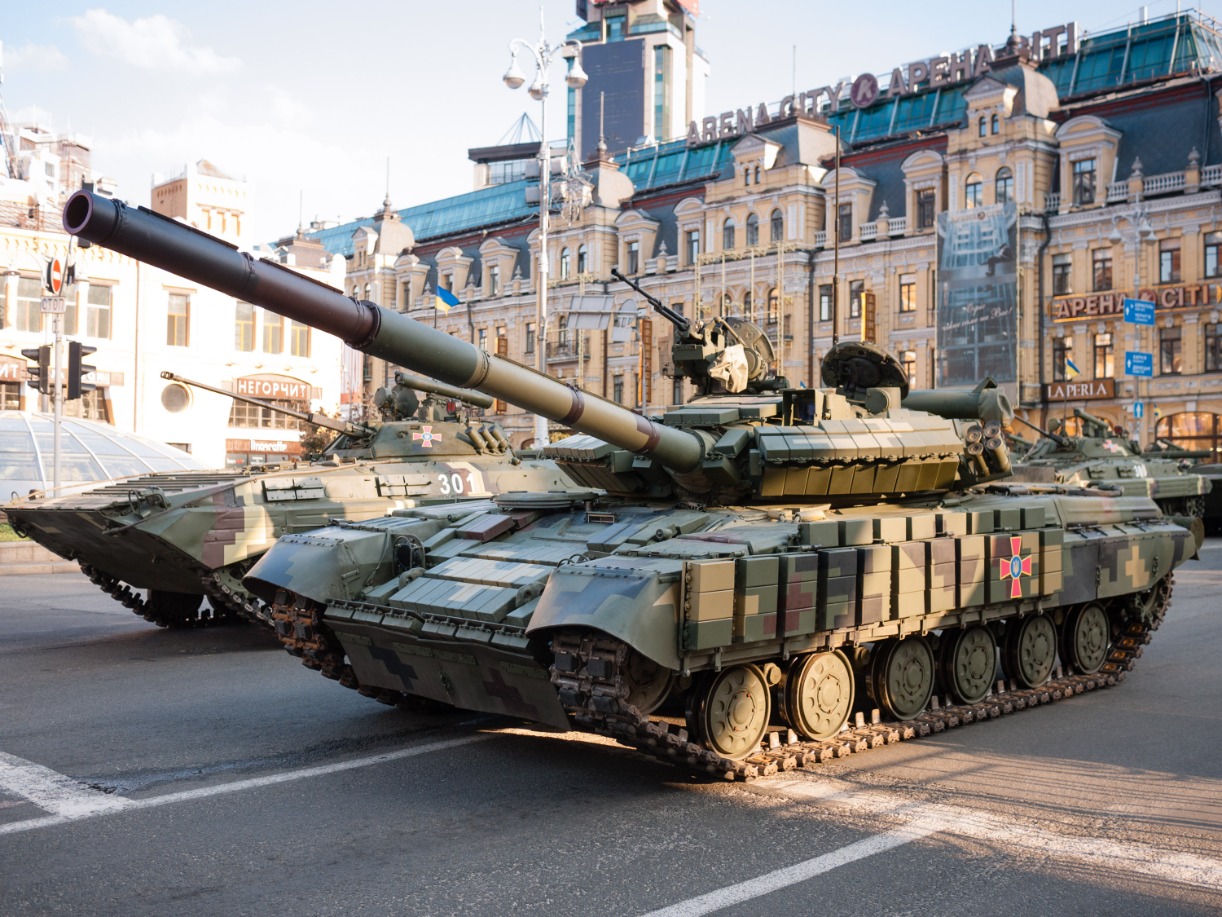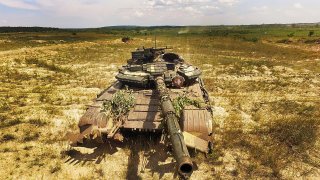Russia's T-64: The Ancient Tank Being Sent to War in Ukraine
The Ukraine War has shown that older military platforms like the Soviet-era T-64 Main Battle Tank (MBT) can outperform newer systems in combat.
Summary and Top Points You Need to Know: The Ukraine War has shown that older military platforms like the Soviet-era T-64 Main Battle Tank (MBT) can outperform newer systems in combat.
-Despite its age and design limitations, the T-64 has been effectively used by Ukraine, leveraging its speed and handling in difficult terrain.
-While its armor struggles against modern anti-tank weapons, the T-64’s familiarity and ease of maintenance have proven advantageous.
-Additionally, the rise of drones has introduced new challenges for tanks, highlighting the need for militaries to adapt their armored vehicles for modern warfare.
Ukraine’s T-64 Tanks Prove Old-School Armor Still Has a Place in Modern Warfare
The Ukraine War has put to bed the notion that modern militaries engaged in warfare require the most advanced systems to win. The older platforms have tended to outperform the newer systems, for both sides in the Ukraine War. One of the platforms that have made a comeback from the graveyard of forgotten favorites is the Soviet-era T-64 Main Battle Tank (MBT).
Built around the mid-1960s by the Kharkiv Morozov Machine Building Design Bureau in Ukraine, the T-64 was ahead of its time. Equipped with a 125-mm Smoothbore gun, te most advanced composite armor at the time, “gill” armor skirts, and an autoloader system designed to require a smaller crew for the tank, the T-64 was a mainstay for the Red Army during the middle part of the Cold War.
Indeed, the T-64 would go on to influence the future designs of Soviet and, later, Russian MBTs.
After the end of the Cold War and the collapse of the USSR, the Ukrainian state inherited large numbers of the T-64. This was because the manufacturer had been located in Kharkiv, meaning that, naturally, the Ukrainians were going to inherit large numbers of these systems. This was especially the case when the Soviet Union collapsed, as the Red Army left vast amounts of high-grade military equipment behind. Even nuclear weapons!
These MBTs have formed the backbone of Ukraine’s Army and the nation’s response to the illegal invasion of their land by neighboring Russia.
Some Problems
One of the issues with the T-64 is that it was fundamentally designed to fight the threats that the Soviet Red Army faced in the mid-1960s. So, the T-64s that have been deployed (by both sides in the war) have performed better than expected. Ultimately, its armor has struggled against modern anti-tank weapons of the kind that have defined the Ukrainian battlefield.
Despite these problems, the Ukrainians have made proper use of these MBTs in combat. They have leveraged the relatively fast speed of these tanks, the fairly good handling of these tanks in the tough, muddy terrain of Ukraine’s battlefields, and have used these capabilities to get in close to their Russian rivals when in combat.

The age of these tanks makes them difficult to maintain in the modern age, where so much has progressed. Nevertheless, the Ukrainians have made good use of these tanks and have managed to consistently keep these tanks in the fight. The argument should be made that the T-64 has been more useful to the Ukrainians than anything their NATO partners have given them. Plus, the advanced age of the platform works to Ukraine’s advantage.
How Do Drones Impact the T-64?
Since it’s an indigenously built MBT, the Ukrainians have a deep-seated understanding of the T-64. The fact that they’re so old makes replacing them easier than some of the more advanced systems, too. If these systems are lost in combat, while they damage the Ukrainian’s disposition, it is not catastrophic.
Another issue that the two sides have had to contend with has been the rise in usage of complex unmanned aerial vehicles (UAVs), or drones. These drones have been especially problematic for tanks. Going forward, all major militaries, taking the lessons of the Ukraine War into account, will have to figure out how to make their tanks more survivable in such contested conditions.
Author Experience and Expertise: Brandon J. Weichert
Brandon J. Weichert, a National Interest national security analyst, is a former Congressional staffer and geopolitical analyst who is a contributor at The Washington Times, the Asia Times, and The-Pipeline. He is the author of Winning Space: How America Remains a Superpower, Biohacked: China’s Race to Control Life, and The Shadow War: Iran’s Quest for Supremacy. His next book, A Disaster of Our Own Making: How the West Lost Ukraine, is due October 22 from Encounter Books. Weichert can be followed via Twitter @WeTheBrandon.
All images are Creative Commons or Shutterstock.


